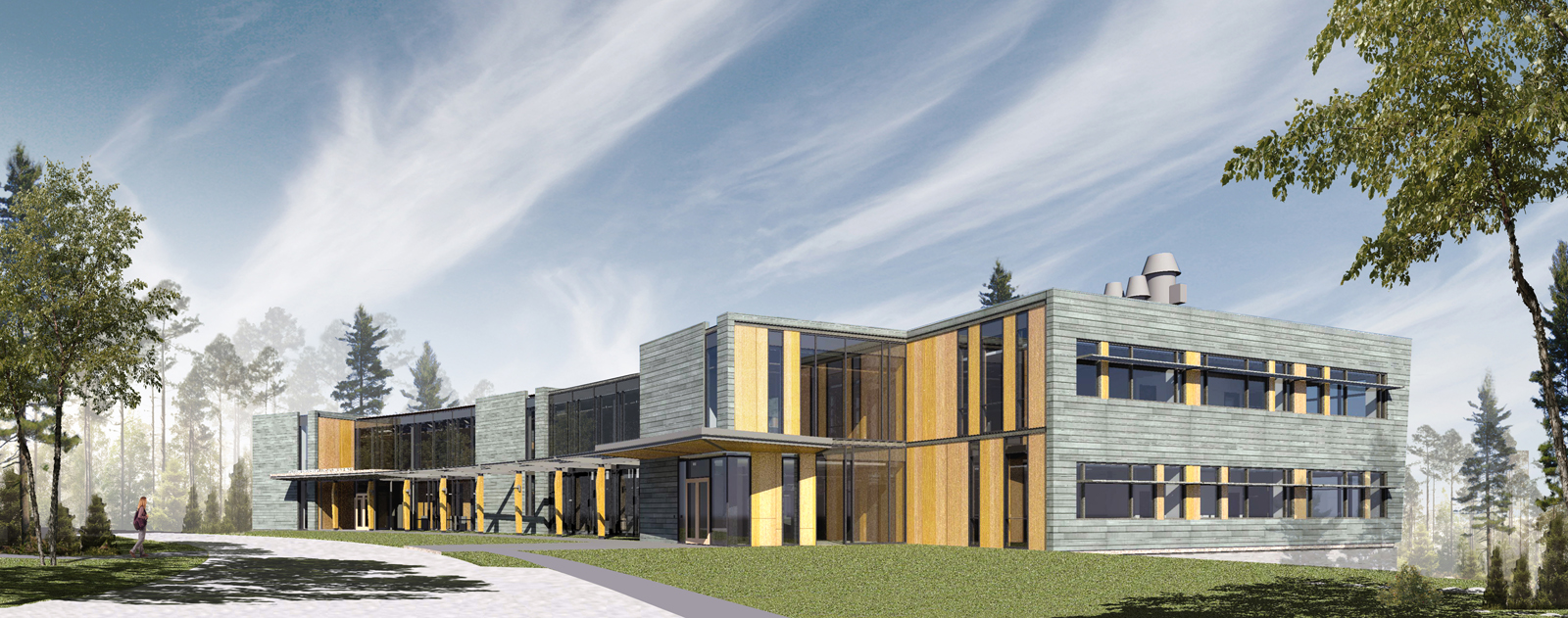Consigli Construction Co. Inc. announces that its Portland, Maine office has broken ground in East Boothbay, Maine on the third building at the new 64-acre Ocean Science and Education campus they are constructing for Bigelow Laboratory for Ocean Sciences.
Due to be completed in November of 2012, the $11.4 million Bigelow Center for Ocean Health (COH) will be one of three complementary and interconnected research centers on the campus built by Consigli Construction and designed by WBRC Architects · Engineers in association with Perkins + Will. Bigelow Laboratory received major funding for the COH from a federal construction grant awarded through the National Institute for Standards and Technology in September 2010.
The COH joins the Bigelow Center for Blue Biotechnology, which will be occupied this December, and the Center for Ocean Biogeochemistry and Climate Change, slated for completion in spring 2012. The newest facility will house a 16,600 square-foot main building, augmented by a 1,200 square-foot shore facility, with seawater pumping facilities and pier and dock space for research vessels to support field research and SCUBA operations.
“The COH will bring scientists together in a unified facility, where we can develop a multi-disciplinary, multi-scale approach to ocean health that will provide improved management tools to support healthy, productive and resilient ocean ecosystems,” said Laboratory Executive Director, Dr. Graham Shimmield.
When fully completed, the Ocean Science and Education campus will provide over 60,000-sf of laboratory, education and administrative space; replacing the Laboratory’s leased facilities in West Boothbay Harbor. BD+C
Related Stories
| Aug 11, 2010
PBK, DLR Group among nation's largest K-12 school design firms, according to BD+C's Giants 300 report
A ranking of the Top 75 K-12 School Design Firms based on Building Design+Construction's 2009 Giants 300 survey. For more Giants 300 rankings, visit http://www.BDCnetwork.com/Giants
| Aug 11, 2010
Turner Building Cost Index dips nearly 4% in second quarter 2009
Turner Construction Company announced that the second quarter 2009 Turner Building Cost Index, which measures nonresidential building construction costs in the U.S., has decreased 3.35% from the first quarter 2009 and is 8.92% lower than its peak in the second quarter of 2008. The Turner Building Cost Index number for second quarter 2009 is 837.
| Aug 11, 2010
AGC unveils comprehensive plan to revive the construction industry
The Associated General Contractors of America unveiled a new plan today designed to revive the nation’s construction industry. The plan, “Build Now for the Future: A Blueprint for Economic Growth,” is designed to reverse predictions that construction activity will continue to shrink through 2010, crippling broader economic growth.
| Aug 11, 2010
New AIA report on embassies: integrate security and design excellence
The American Institute of Architects (AIA) released a new report to help the State Department design and build 21st Century embassies.
| Aug 11, 2010
Section Eight Design wins 2009 Open Architecture Challenge for classroom design
Victor, Idaho-based Section Eight Design beat out seven other finalists to win the 2009 Open Architecture Challenge: Classroom, spearheaded by the Open Architecture Network. Section Eight partnered with Teton Valley Community School (TVCS) in Victor to design the classroom of the future. Currently based out of a remodeled house, students at Teton Valley Community School are now one step closer to getting a real classroom.







